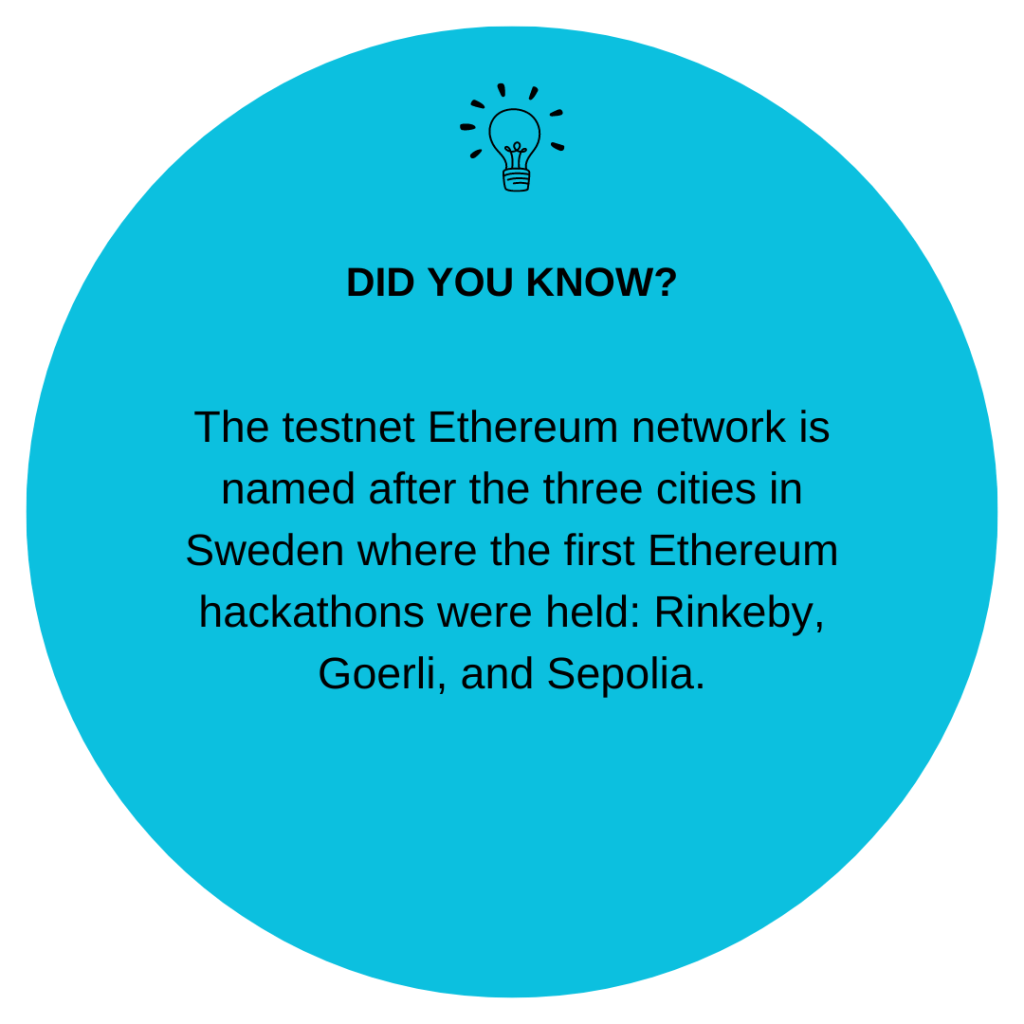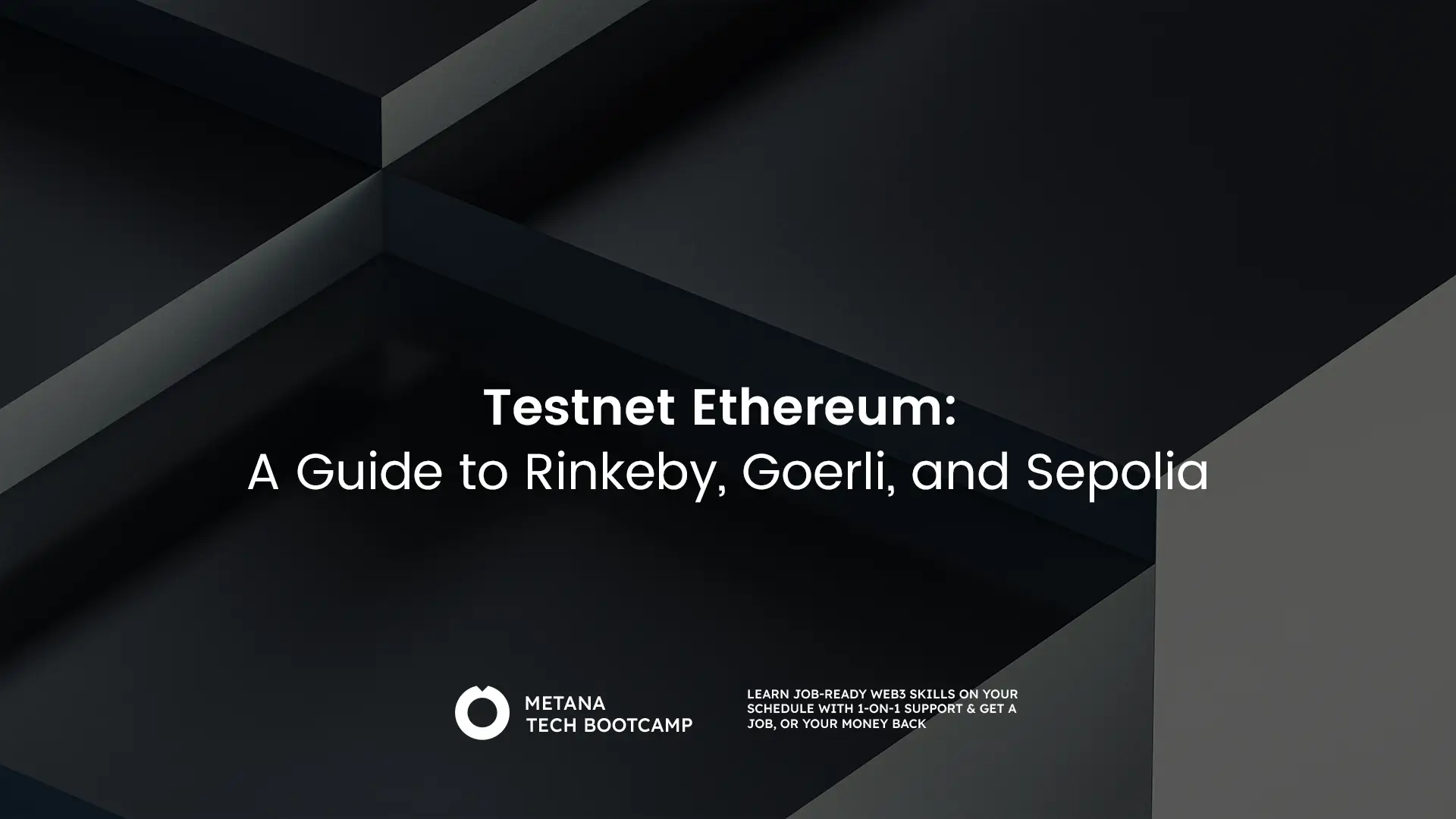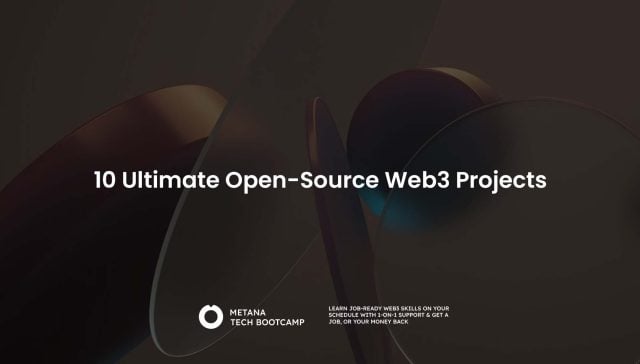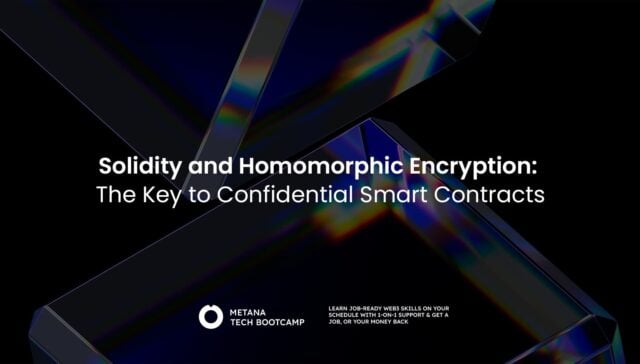TL;DR
Testnet Ethereum is a blockchain used for testing smart contracts and dApps without risking real money.Popular testnets include:
- Rinkeby: Older and widely used, but deprecated.
- Goerli: More reliable and scalable.
- Sepolia: Newer, compatible with Ethereum’s upcoming Merge.
Test ETH can be obtained from faucets for free and used to deploy contracts, send transactions, and interact with dApps.Testnet ETH is not real money and cannot be converted or sold.The future of testnets depends on developer needs and Ethereum’s evolution.
What is Testnet Ethereum?
A testnet is a blockchain network that is used for testing purposes. It is a copy of the main Ethereum blockchain, but it uses testnet ether, which has no real-world value. Testnets are used by developers to test new smart contracts and dapps before they are deployed on the mainnet. They are also used by users to experiment with the Ethereum ecosystem without risking their real money.

There are several testnets for Ethereum, each with its own strengths and weaknesses. The most popular testnets are:
- Rinkeby
- Goerli
- Sepolia
To get testnet ether, you can use a faucet. A faucet is a website that gives away free testnet ether. Once you have some testnet ether, you can use it to deploy smart contracts, send transactions, and interact with other dapps on the testnet.
Testnets are an essential part of the Ethereum ecosystem. They allow developers to test their code without risking real money and they allow users to experiment with the Ethereum platform without any risk. If you are interested in learning more about Ethereum, I recommend using a testnet to get started.
What is the Rinkeby faucet?
A Rinkeby faucet is a website or application that provides free test Ether (ETH) to users who need it for testing purposes. The Rinkeby testnet is a public testnet for the Ethereum blockchain, and it is used by developers to test their applications before deploying them to the mainnet.
To use a Rinkeby faucet, you will need to have a wallet that supports the Rinkeby network. Once you have a wallet, you can visit the faucet website and enter your wallet address. The faucet will then send you a small amount of test ETH.
There are a number of Rinkeby faucets available, and they all work in a similar way. Some faucets require you to complete a CAPTCHA before you can receive test ETH, while others require you to follow the faucet on social media.
If you are a developer who is testing an application on the Rinkeby testnet, then you will need to use a Rinkeby faucet to get test ETH. Test ETH is not valuable, so you do not need to worry about losing it. However, it is important to note that test ETH cannot be transferred to the mainnet.
Here are some of the popular Rinkeby faucets:
- Rinkeby Faucet: This faucet is a popular option for getting test ETH. It is easy to use and does not require you to complete any CAPTCHAs.
- Alchemy Rinkeby Faucet: This faucet is another popular option for getting test ETH. It is easy to use and allows you to request up to 1 ETH per day.
- Quicknode Rinkeby Faucet: This faucet is a good option for getting test ETH if you use a wallet that does not support the Rinkeby network. It allows you to request up to 0.1 ETH per day.
Why is the Rinkeby faucet not working?
The Rinkeby faucet is not working because the Rinkeby testnet is deprecated and will be sunset in Summer 2022. This means that it is no longer being supported by the Ethereum Foundation and developers are encouraged to move to other testnets, such as Goerli and Sepolia.
The Rinkeby faucet was a service that provided free testnet ETH to developers who needed it to test their Ethereum applications. However, since the Rinkeby testnet is no longer being supported, there is no need for a faucet. Developers can now get testnet ETH from other sources, such as Alchemy’s Goerli faucet and Sepolia Faucet.
Here are some of the reasons why the Rinkeby faucet was shut down:
- The Rinkeby testnet was becoming increasingly congested, making it difficult for developers to test their applications.
- The Rinkeby testnet was not being used as much as other testnets, such as Goerli.
- The Ethereum Foundation was no longer able to justify the cost of maintaining the Rinkeby testnet.
What are the best new testnets for ETH?
There are a few alternatives to the Rinkeby faucet. Some of the most popular alternatives include:
- Goerli faucet: The Goerli faucet is a service that provides free testnet ETH to developers who need it to test their Ethereum applications. It is a popular alternative to the Rinkeby faucet because Goerli is a more recent testnet that is designed to be more reliable and scalable than Rinkeby.
- Sepolia faucet: The Sepolia faucet is a service that provides free testnet ETH to developers who need it to test their Ethereum applications. It is a newer alternative to the Rinkeby faucet and is designed to be more compatible with the upcoming Ethereum Merge.
Here is a table that summarizes the pros and cons of Goerli and Sepolia
| Feature | Goerli | Sepolia |
|---|---|---|
| Maturity | More established and mature | Less established and mature |
| Users and developers | More users and developers | Less users and developers |
| Tooling and resources | More tooling and resources are available | Less tooling and resources are available |
| Compatibility with existing Ethereum tooling | More compatible with existing Ethereum tooling | Not as compatible with existing Ethereum tooling |
| Incentive to user for testing | Not as much as incentive to use for testing. | More incentive to use for testing |
| Alignment with final merge | Not as close to final Merge implementation | More closely aligned with then final Merge implementation |
Here are some additional details about Goerli and Sepolia:
- Goerli: Goerli is a public testnet for Ethereum. It is a fork of the Ethereum mainnet and uses the same consensus mechanism, EVM, and tooling. Goerli is designed to be a more reliable and scalable alternative to Rinkeby.
- Sepolia: Sepolia is a public testnet for Ethereum. It is a fork of the Ethereum mainnet and uses the same consensus mechanism, EVM, and tooling. Sepolia is designed to be more compatible with the upcoming Ethereum Merge.
Ultimately, the best alternative to the Rinkeby faucet will depend on your specific needs. If you are new to Ethereum development, I recommend using the Goerli faucet to get started. Once you have a basic understanding of Ethereum development, you can then switch to the Sepolia faucet if you need a testnet that is more compatible with the upcoming Ethereum Merge.

How to get test ETH for Goerli and Sepolia?
Use a faucet: There are a number of faucets that provide free test ETH to developers. Some popular faucets include:
- Alchemy Goerli Faucet: This faucet provides 0.1 ETH to each user once per day.
- Infura Sepolia Faucet: This faucet provides 0.1 ETH to each user once per day.
- QuickNode Goerli Faucet: This faucet provides 0.1 ETH to each user once per day.
Mine ETH: You can mine test ETH using a number of different mining pools. Some popular mining pools include:
- DwarfPool: This pool has a low minimum payout threshold and supports a variety of mining algorithms.
- NanoPool: This pool has a high uptime and a low fee.
- Poolin: This pool has a large user base and a high hashrate.
Buy ETH: You can also buy test ETH from a number of different exchanges. Some popular exchanges include:
- Uniswap: This exchange allows you to swap ETH for test ETH using a variety of different tokens.
- PancakeSwap: This exchange allows you to swap ETH for test ETH using a variety of different tokens.
- 1inch: This exchange allows you to swap ETH for test ETH using a variety of different tokens.
Once you have obtained test ETH, you can use it to test your Ethereum applications. You can deploy your contracts, send transactions, and interact with your applications just as you would on the mainnet. However, it is important to remember that test ETH is not real ETH and it cannot be exchanged for real ETH.
Here are some additional tips for getting test ETH:
- Be patient: It may take some time to get test ETH from a faucet or mining pool.
- Be careful: When buying test ETH, be sure to buy it from a reputable exchange.
- Use a testnet wallet: Do not use your mainnet wallet to store test ETH.
- Have fun: Testing your Ethereum applications is a great way to learn more about Ethereum development.
Troubleshooting tips for Goerli and Sepolia?
Here are some troubleshooting tips for Goerli and Sepolia:
- Check your network settings: Make sure that your MetaMask wallet is connected to the correct network. For Goerli, the network ID is 5 and the chain ID is 10. For Sepolia, the network ID is 10 and the chain ID is 1337.
- Check your gas price: Make sure that your gas price is high enough to get your transaction included in the block. The current gas price for Goerli is around 5 gwei and the current gas price for Sepolia is around 10 gwei.
- Check your nonce: Make sure that your nonce is correct. A nonce is a number that increments each time you send a transaction. If your nonce is incorrect, your transaction will be rejected.
- Check your balance: Make sure that you have enough ETH to pay for the transaction fees. The transaction fees for Goerli and Sepolia are around 10 gwei.
- Try again later: If you are still having trouble, try again later. The Goerli and Sepolia networks can sometimes be congested, which can cause transactions to be delayed or rejected.
Here are some additional tips for troubleshooting Goerli and Sepolia:
- Use a block explorer: A block explorer can help you to track your transactions and see if they have been included in the block, such as
- Goerli Explorer
- Sepolia Explorer
- Join the community: There are a number of online communities where you can ask for help troubleshooting Goerli and Sepolia, such as
- Goerli Discord
- Sepolia Discord
I hope these tips help you to troubleshoot any problems you may encounter when using Goerli and Sepolia.
What does the future hold for Goerli, Sepolia?
The future of Goerli and Sepolia is uncertain. However, there are a few possibilities.
- Goerli and Sepolia could be shut down. This is unlikely, as they are both important testnets for Ethereum developers.
- Goerli and Sepolia could be merged into a single testnet. This would make it easier for developers to test their applications on a single network.
- Goerli and Sepolia could be used for different purposes. For example, Goerli could be used for testing new features, while Sepolia could be used for testing applications that are ready for release.
Ultimately, the future of Goerli and Sepolia will depend on the needs of Ethereum developers. If developers continue to need testnets, then Goerli and Sepolia will likely continue to exist. However, if developers find other ways to test their applications, then Goerli and Sepolia may become obsolete.
Here are some of the factors that could affect the future of Goerli and Sepolia:
- The popularity of Ethereum. If Ethereum continues to grow in popularity, then there will be a greater need for testnets. This could lead to Goerli and Sepolia being used more heavily.
- The development of new Ethereum features. If new Ethereum features are developed, then there will be a need for testnets to test these features. This could lead to Goerli and Sepolia being used more heavily.
- The availability of other testnets. If other testnets become available, then Goerli and Sepolia may become less popular. This could lead to them being shut down or merged into a single testnet.
It is important to note that these are just a few possibilities. The future of Goerli and Sepolia is uncertain and will depend on a number of factors.
FAQs
- What is the testnet of Ethereum?
A testnet is a blockchain network that is used for testing new features and applications before they are deployed on the mainnet Ethereum network. Testnets are typically free to use and allow developers to experiment with new features without risking their real money.
- Is testnet ether worth anything?
No, testnet ether is not worth anything. It is a virtual currency that is used for testing purposes only.
- Which Ethereum testnets are active?
There are three active Ethereum testnets: Rinkeby, Goerli, and Sepolia.
- Rinkeby: Rinkeby is the oldest and most popular Ethereum testnet. It is used for testing new features and applications.
- Goerli: Goerli is a more robust testnet than Rinkeby. It is used for testing more complex applications and features.
- Sepolia: Sepolia is the newest testnet Ethereum network. It is designed to mimic the mainnet Ethereum network as closely as possible, so it is used for testing applications and features that will be deployed on the mainnet.
- How to get free ETH for testnet?
There are a few ways to get free ETH for testnet:
- You can get free ETH from faucets. Faucets are websites that give away small amounts of testnet ETH.
- You can earn free ETH by participating in airdrops. Airdrops are promotional events where developers give away free ETH to users.
- You can also get free ETH by participating in bounty programs. Bounty programs are programs where developers offer rewards to users for completing tasks, such as testing new features or reporting bugs.
- Are testnet coins real?
No, testnet coins are not real. They are virtual currencies that are used for testing purposes only.
- Does testnet pay?
No, testnet does not pay. It is a free service that is provided by the Ethereum community.
- How to earn with testnet?
There are a few ways to earn with testnet:
- You can earn by participating in airdrops and bounty programs.
- You can also earn by providing liquidity to testnet decentralized exchanges (DEXs).
- You can also earn by staking your testnet ETH.
- Which testnet is best?
The best testnet for you depends on your needs. If you are new to Ethereum development, Rinkeby is a good place to start. If you are testing more complex applications, Goerli is a better option. And if you are testing applications that will be deployed on the mainnet, Sepolia is the best choice.
- How do I convert testnet coins to real coins?
You cannot convert testnet coins to real coins. They are two separate currencies.
- Can testnet tokens be sold?
No, testnet tokens cannot be sold. They are not real and have no value.





